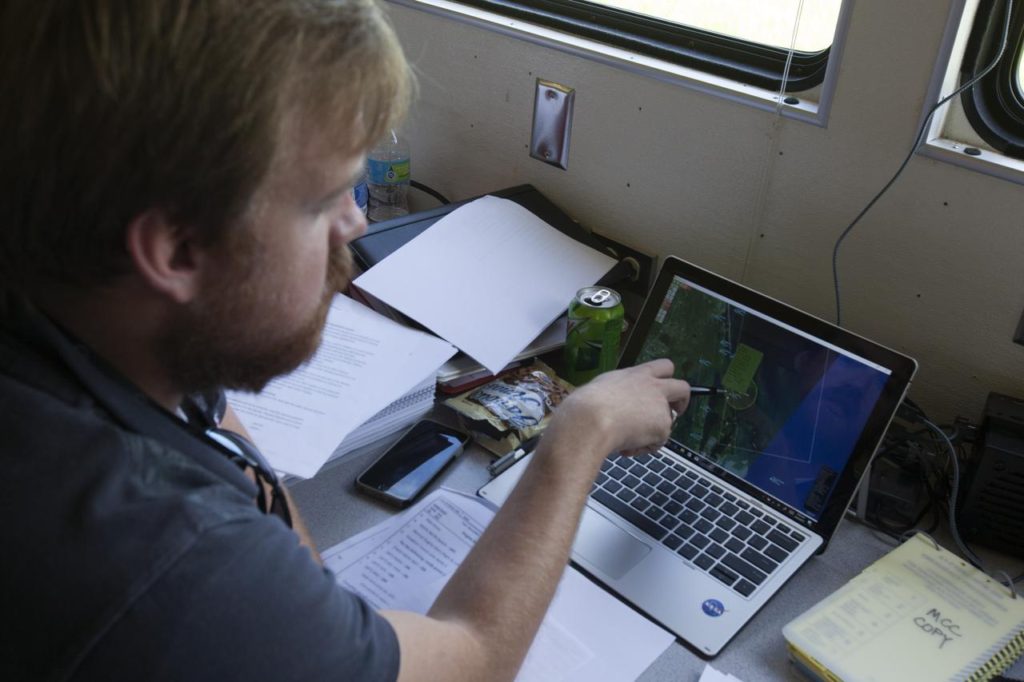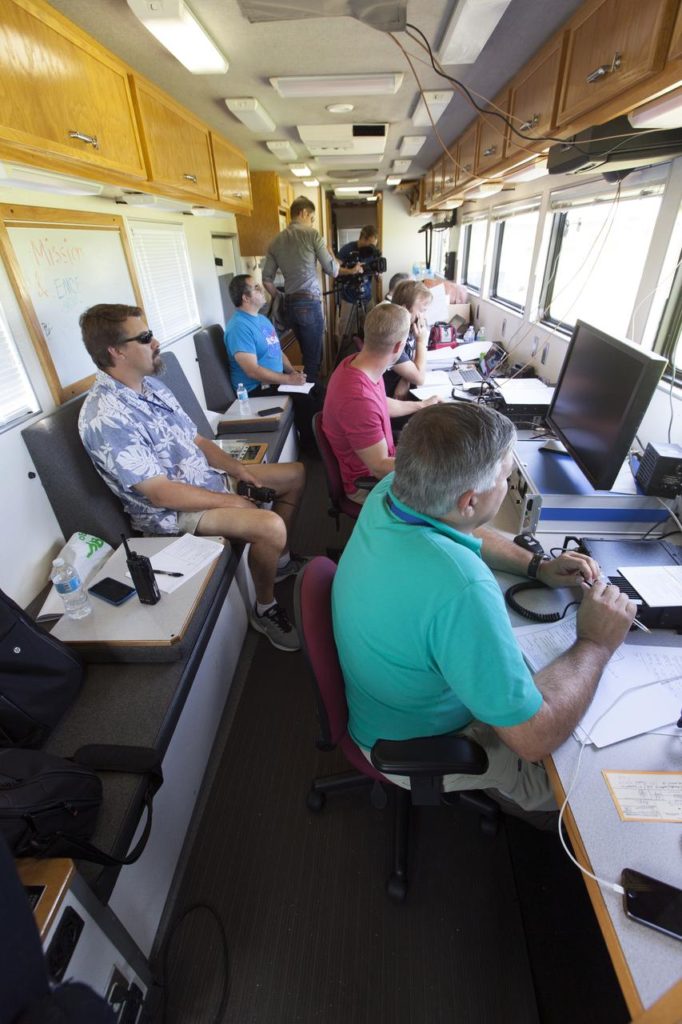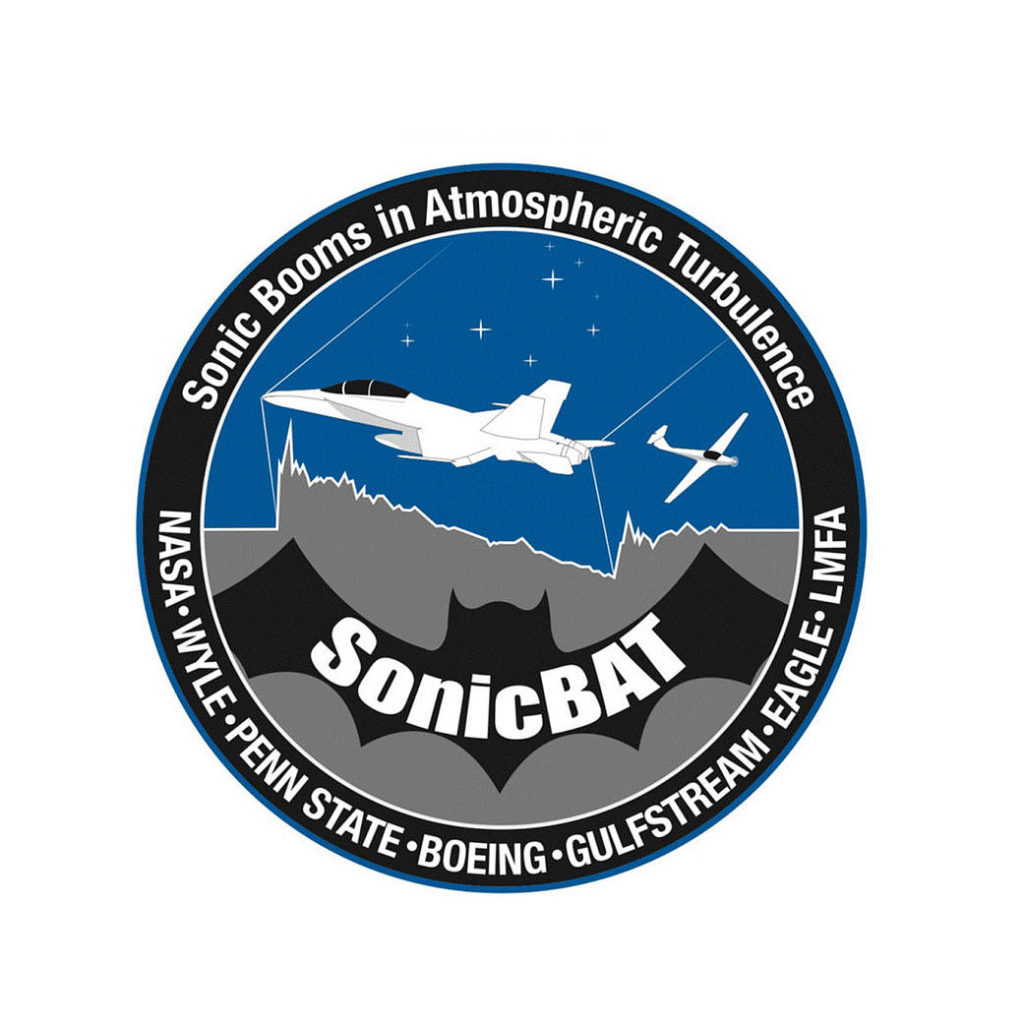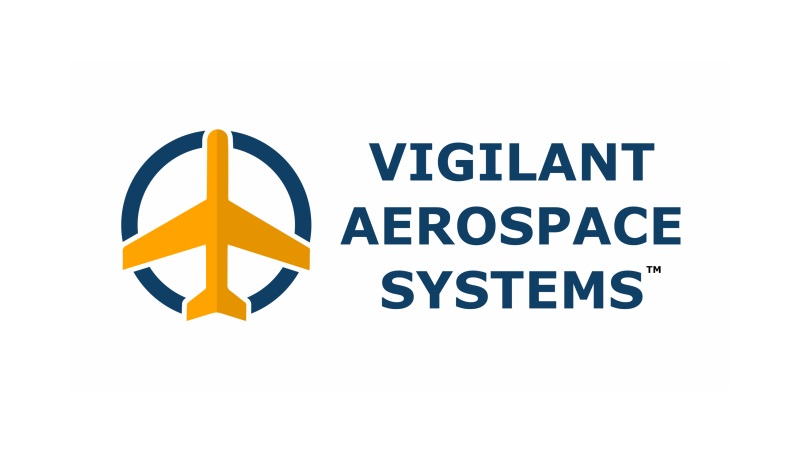The latest version of FlightHorizon is now being used by NASA flight researchers to provide real-time airspace situational awareness, heads-up display, flight safety, and flight logging.
FlightHorizon software uses data from standard aviation transponders and radar, when available, to provide a 2D map-based view and 3D synthetic cockpit view of national airspace and full sensor fusion across aviation transponders, radars and online data feeds. The system is designed to help operators maintain flight safety, provide aircraft alerts and warnings, and provide specific commands to maintain well-clear distances, when necessary. The system also provides detailed airspace logging of all detected aircraft multiple times per second and full flights can be re-played in FlightHorizon from the logs. The system can also provide full binary logging of aircraft signals to allow for later detailed analysis. These flights are part of the Sonic Booms in Atmospheric Turbulence (SonicBAT) flight research program. The program involves supersonic research flights by F-18 aircraft off the coast of Florida. Led by researchers from NASA Armstrong Flight Research Center in Edwards, California and carried out at NASA Kennedy Space Center, these flights are the first time that NASA has utilized FlightHorizon in mission-critical flight operations.“We are gratified to see FlightHorizon used to the full extent of its capabilities for these important flights at Kennedy Space Center,” said Kraettli L. Epperson, CEO and co-founder of Vigilant Aerospace. “The product provides a wide range of powerful airspace monitoring, visualization and logging functions, in addition to providing autonomous detect-and-avoid capabilities for unmanned aircraft. We expect this project to open up new opportunities for future use of FlightHorizon for both research projects and for manned aircraft monitoring, logging and flight safety,” said Epperson.Flights began on August 22 and are expected to continue through September 15 with three research flights per day being conducted, when weather allows. Over a two to three week period, research teams will record data on all sonic booms produced in order to gain a better understanding of how “low-altitude atmospheric turbulence affects sonic booms” (2). These SonicBAT tests are a continuation of the supersonic research flights conducted at Edwards Air Force Base in California in 2016, which provided data on the “effect of atmospheric turbulence on sonic booms in a dry climate” (2). This round of flights are focused on measuring the effect of the atmospheric turbulence on sonic booms in the humid climate of Florida.
SonicBAT Ultimate Goal is Two-Fold:
-
- To test and further develop the a new Low Boom Flight Demonstration aircraft (LBFD) preliminary design, the “Quiet Supersonic Transport, or QueSST” (3) – the result of decades of supersonic flight research. The aerodynamic design and innovations resulting from this research are focused on mitigating the sonic boom to make supersonic flight considerably quieter (1).”NASA aims to fly its low boom demonstrator, X-plane, by 2021. It completed the preliminary design stage of its initial design stage of the Quiet Supersonic Transport, or QueSST, in June” (3).
- Set flight standards for a “quiet sonic thump” and “provide data to the FAA for the development of potential noise standards for future supersonic flight over land” creating the opportunity for “commercial flights that can carry passengers at supersonic speeds, reducing commercial flight times considerably” (2).”The plan is to use the data gathered in this series of tests along with the previous data collected at Edwards AFB last year to validate tools and models that will be used to develop future aircraft with quiet supersonic capabilities, replacing the current loud sonic booms with a soft thump” (4).
FlightHorizon in Action

Photography Credit: NASA/Bill White – An engineer in a control trailer at NASA’s Kennedy Space Center in Florida monitors data using FlightHorizon before flights of agency F-18 jets to measure the effects of sonic booms. Several flights a day have been taking place the week of Aug. 21, 2017 as part of NASA’s Sonic Booms in Atmospheric Turbulence, or SonicBAT II Program.

Photography Credit: NASA/Bill White – Engineers staff a control trailer at NASA’s Kennedy Space Center in Florida before flights of agency F-18 jets to measure the effects of sonic booms.
More SonicBAT Info
NASA Kennedy Space Center Facebook Live on August 25, 2017
“We’re taking you behind the scenes of NASA’s SonicBAT project with the research pilots flying the missions! Learn all about what makes supersonic technology so important to the future of aviation. Post your questions below and we’ll answer them on-air! #FlyNASA”NASA SonicBAT media briefing on August 24, 2017
Aug 25, 2017 – SonicBAT Project Manager Brett Pauer briefs media on NASA’s effort to quantify the effect of atmospheric turbulence on the propogation characteristics of noise caused by sonic booms. SonicBAT sonic boom testing has been previously carried out at Edwards Air Force Base in 2016, with Florida being chosen because of its’ high summertime humidity levels. Thunderstorms passed thru the area at noon and canceled the days activities.NASA’s Sonic BAT Research Project
Aug 24, 2017 – WFIT 89.5FM on-site at NASA Kennedy Space Center in Titusville, Florida discussing the NASA SonicBAT flight testing with comments from NASA Engineer Ed Haering. The goal is to design quieter supersonic aircraft.F-18 Take-off Clip posted by @NASAKennedy
About the NASA SonicBAT ProgramWheels up! Let’s do some sonic boom research! #FlyNASA pic.twitter.com/DtnMcSjnK0
— NASA Kennedy / KSC (@NASAKennedy) August 23, 2017
 The goal of the Sonic Booms in Atmospheric Turbulence (SonicBAT) program, led by NASA Armstrong, is to research and measure the effect of low-altitude turbulence on sonic booms reaching the ground and to help make supersonic aircraft quieter to operate. The flights are designed to collect sonic boom signature data during turbulent atmospheric conditions to develop models of the effects of turbulence on sonic booms. The flights will include flying NASA F-18 aircraft at speeds of Mach 1.38 to create shockwaves, which are measured both from aircraft and from sensors on the ground. FlightHorizon is used to monitor and log the flights, as well as monitoring the airspace around the testing area. SonicBAT is the first modern flight effort designed to measure this phenomenon. Read more here.
About NASA Armstrong Flight Research Center
NASA Armstrong Flight Research Center is the agency’s lead center for atmospheric flight research, operations, and testing and continues to accelerate advances in science, technology and exploration to enhance knowledge, education, innovation, economic vitality and stewardship of Earth. Armstrong supports the agency by providing flight research and development for NASA aeronautics, and global flight operations and development for NASA science in support of astrophysics and earth science. Learn more here.
About Vigilant Aerospace Systems
Vigilant Aerospace Systems, Inc. is a provider of industry-leading airspace management and safety systems for both manned and unmanned aircraft. The company’s software platform, FlightHorizon™, is based on an exclusively licensed NASA patent and provides situational awareness, synthetic cockpit views, commands to maintain well-clear distances, and other flight information to enable integration of commercial drones into the national airspace. For more information, visit www.VigilantAerospace.com.
More information about the research project can be found here:
The goal of the Sonic Booms in Atmospheric Turbulence (SonicBAT) program, led by NASA Armstrong, is to research and measure the effect of low-altitude turbulence on sonic booms reaching the ground and to help make supersonic aircraft quieter to operate. The flights are designed to collect sonic boom signature data during turbulent atmospheric conditions to develop models of the effects of turbulence on sonic booms. The flights will include flying NASA F-18 aircraft at speeds of Mach 1.38 to create shockwaves, which are measured both from aircraft and from sensors on the ground. FlightHorizon is used to monitor and log the flights, as well as monitoring the airspace around the testing area. SonicBAT is the first modern flight effort designed to measure this phenomenon. Read more here.
About NASA Armstrong Flight Research Center
NASA Armstrong Flight Research Center is the agency’s lead center for atmospheric flight research, operations, and testing and continues to accelerate advances in science, technology and exploration to enhance knowledge, education, innovation, economic vitality and stewardship of Earth. Armstrong supports the agency by providing flight research and development for NASA aeronautics, and global flight operations and development for NASA science in support of astrophysics and earth science. Learn more here.
About Vigilant Aerospace Systems
Vigilant Aerospace Systems, Inc. is a provider of industry-leading airspace management and safety systems for both manned and unmanned aircraft. The company’s software platform, FlightHorizon™, is based on an exclusively licensed NASA patent and provides situational awareness, synthetic cockpit views, commands to maintain well-clear distances, and other flight information to enable integration of commercial drones into the national airspace. For more information, visit www.VigilantAerospace.com.
More information about the research project can be found here:
- Conner, Monroe. “NASA to Produce Sonic Booms at Kennedy Space Center for Research.” NASA, 20 July 2017, www.nasa.gov/centers/armstrong/features/sonic_boom_tests_set_for_ksc.html. [Link]
- “ALERT: NASA F-18 Flights From Kennedy Space Center Will Produce Sonic Booms Across Brevard Starting Today.” Space Coast Daily, NASA, 21 Aug. 2017, spacecoastdaily.com/2017/08/video-nasa-f-18-flights-from-kennedy-space-center-will-produce-sonic-booms-across-brevard/. [Link]
- Kluber, Amy. “NASA, Rockwell Collins Team for Supersonic Flights.” Avionics, 18 Aug. 2017, www.aviationtoday.com/2017/08/18/nasa-rockwell-collins-team-supersonic-flights/. [Link]
- “NASA F-18 chase plane testing ways to soften sonic booms.” SpaceFlight Insider, 25 Aug. 2017, www.spaceflightinsider.com/space-centers/armstrong-flight-research-center/nasa-f-18-chase-plane-tests-ways-soften-sonic-booms/. [Link]

